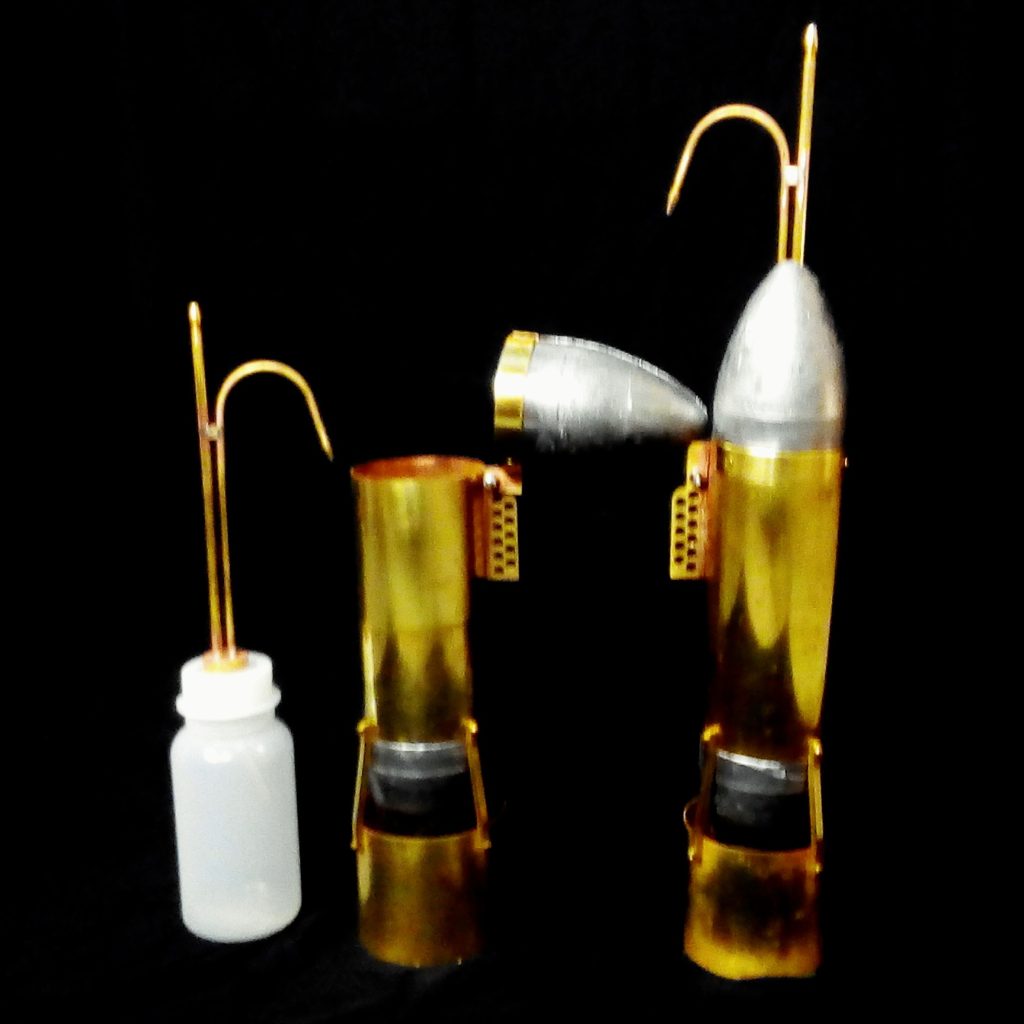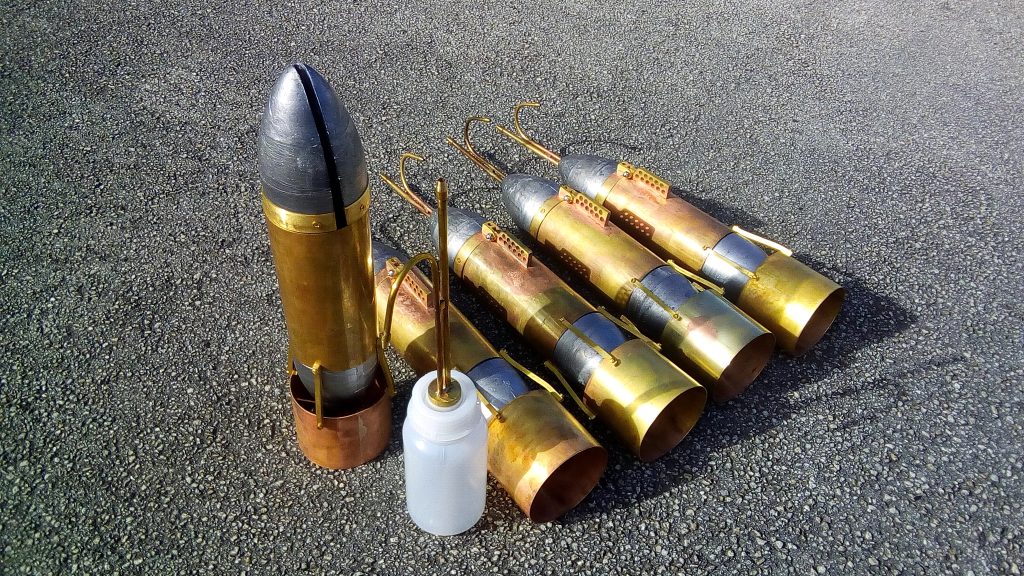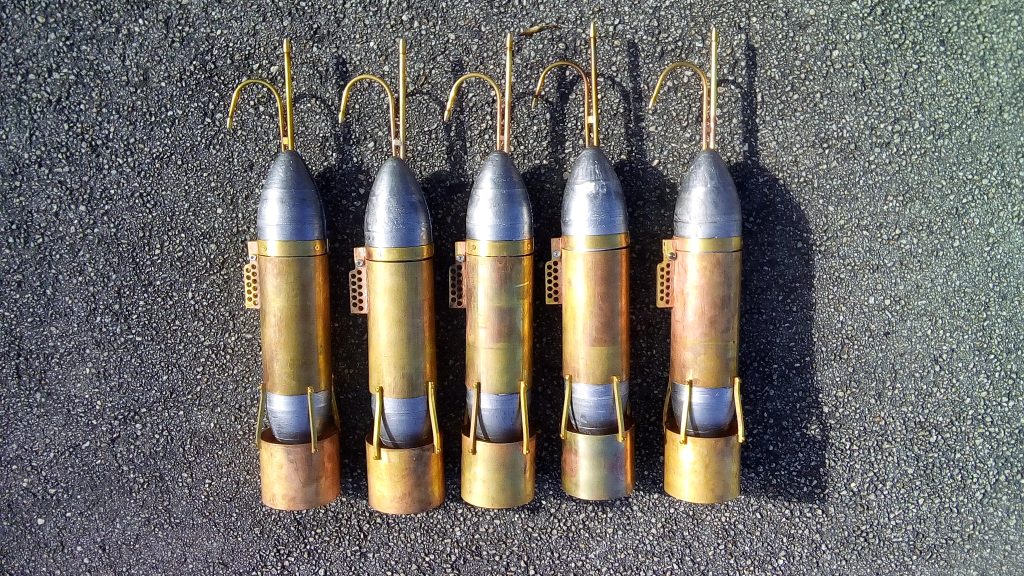The Nilsson suspended sediment sampler is a de facto standard in many countries since the 1960’s. Named after the developer Dr. Bengt Nilsson, this sampler is also known as the Uppsala Sampler, or the Swedish Sampler, from the name of the university where it was developed and of the country, respectively.

The “fish” holds a 1 liter water sample bottle. The tube system is the essential design feature for obtaining representative samples under a variety of conditions. The sampler is developed to take isokinetic samples. It works both as a point sampler and as a depth-integrating sampler. The design of the vent tubes allows for gradual filling of the sample bottle at a rate that is proportional to the flow velocity. The air evacuation tube ends 8 cm above the sample intake tube. By moving the sampler at a steady pace through the water column a vertically integrated sample can be collected that is representative of the sediment flux. The tubes continue to near the center of the bottle, thus minimising loss of sample if the sampler tilts forward or swings during retrieval.

The Nilsson sampler can be used as a depth-integrating sampler from flow velocities as low as 16 cm/s (0.5 ft/s). Screw-on brass nozzles are used. An inflow / outflow nozzle combination of 6 mm / 4 mm is recommended for velocities above 25 cm/s, while the combination 4 mm / 2 mm is best under 25 cm/s. The fusiformed sampler is stable in water velocities of 200 cm/s or more, in spite of only weighing 11 kg (24 lbs). Its small diameter of only 10 cm with a 12 cm fin makes it possible to sample 10 cm (4 in) from the bottom. The recommended sample size is 800 mL, but up to 950 mL can be collected without through-flow. The sampler is a good all-round depth-integrating water sampler for suspended sediment transport measurements. For wading depths we offer a sampling device that uses the same standard bottle and intake tubes. The sampler can be used also in cold weather provided the tubes are kept warm until the sampling starts.

Analysis of SSC Samples
The suspended sediment samples can be filtered on a field station as well as in the laboratory using this pressure filtration device. A hand pump of the type used for bicycles is used to create the pressure that speeds up the filtration. The standard procedure is to weigh the filter, filter the sample, dry the filter (in 105ºC, but 65ºC has also been used), weigh it again, and subtract the filter mass for total sediment mass. If desired, the filter is ignited in an oven at 550ºC, and weighed to get the inorganic sediment mass. Divide by sample volume to get sediment concentration in g/L.
An International Standard
This sediment sampler is the original design by Dr. Bengt Nilsson for use in the IHD project of the UN (International Hydrological Decade). The sampler was developed in 1969 as the IHD standard for sediment sampling in Scandinavia and other countries. The Swedish Meteorological and Hydrological Institution (SMHI) early equipped all its sediment measurement stations with this sampler, and it has since been used for research and by hydrological institutions in many countries and on several continents. Performance data are taken from: Nilsson, B., 1969: Development of a depth-integrating water sampler. UNGI Rapport 2, 17 pp. Uppsala University, Department of Physical Geography, ISSN 0375-8109. [ pdf ]
